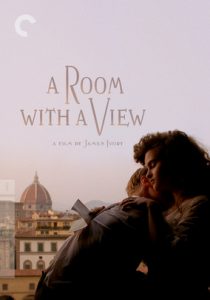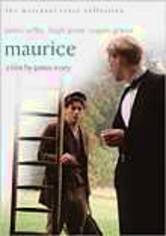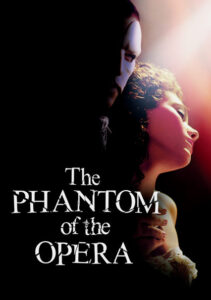A Room with a View-1986
Director James Ivory
Starring Helena Bonham Carter, Julian Sands
Scott’s Review #695

Reviewed November 3, 2017
Grade: B+
A Room with a View (1986) is one of four major films to be based on famed British author E.M. Forster’s novels- Howards End (1992) and A Passage to India (1986), and Maurice (1987) being the other three.
The foursome contains common elements such as the vast English countryside and class distinctions, leading to heartaches and passion.
In the case of A Room with a View, the film traverses from artistic Florence, Italy to a cozy village in England.
The film is a period drama mixed with lots of authentic, unforced, good humor and at its core is a solid romantic drama, though if compared with the aforementioned other films, is not quite on par, though is still an entertaining watch- given the dismal year of cinema circa 1986.
The film was considered one of the best releases that particular year and was awarded a handful of Oscar nominations- winning Costume Design, Adapted Screenplay, and Art Direction.
Cultured and oftentimes brooding, Lucy Honeychurch (Helena Bonham Carter), goes on holiday to Florence with her rigid and conventional older cousin Charlotte (Maggie Smith), who also serves as her chaperone.
While enjoying the artistry of the European city, Lucy meets and falls madly in love with free-spirited George Emerson (Julian Sands), who is also visiting Florence with his easy-going father, Mr. Emerson (Denholm Elliott).
The men seem oblivious to Lucy’s (and Charlotte’s) Victorian-era upbringing, which attracts Lucy and appalls Charlotte.
Months later, the would-be lovers reunite in England and spend time averting obstacles thwarting their love, while admitting to themselves that their love is blossoming.
As Lucy has become engaged to snobbish Cecil Vyse (Daniel Day-Lewis), a sophisticate deemed suitable by her family to marry Lucy, the pair lacks the romantic connection that she shares with George.
Day-Lewis, on the cusp of becoming a breakout star and brilliant talent, gives Cecil a somewhat comical, yet endearing persona, that makes him the main foil, but also breathes sympathy into the character. This is especially evident during the Lucy/Cecil break-up scene.
The standout performance in A Room with a View is the comic brilliance of Smith as the manipulative and witty, Charlotte Bartlett, and this is evident throughout.
Smith injects vigor and comic wit into her character, as Charlotte seemingly makes one blunder after the other in the self-deprecating way she manages to use to her advantage to humorously manipulate other characters into doing things her way.
A risqué and quite hysterical all-male frontal nudity scene occurs mid-way through the film and, while not advancing the plot in any way, steals the entire film in its homoerotic and free-spirited way.
As the Reverend, young George, and Lucy’s energetic brother, Freddy, walk along a beautiful path, they decide to skinny dip in a pond where they horseplay and wrestle with each other completely in the buff.
As they chase each other around the pond, grab each other, and lightly smack bottoms, one cannot help but wonder if this scene set the tone for 1987’s gay-themed period piece based on another E.M. Forster novel, called Maurice.
A coincidence? I think not. As the trio of rascals come upon the properly dressed girls on the path, hilarity takes over the scene.
The art direction and costumes are of major excellence to A Room with a View as the film “looks” like a 1910 period rather than seeming like it is 1986 with the actors donning early twentieth-century styles.
Every scene is a treat from this perspective as we wonder who will wear what attire in the next scene.
As with the other aforementioned E.M. Forster films, class distinctions, and expectations are a major element in A Room with a View and make Lucy and George all the more likable as a couple.
Still, from an overall standpoint, there is something slightly amiss in the story department.
I did not find Helena Bonham Carter, an actor I like, overall very compelling as Lucy, and I think this leads to the story being slightly less than it might have with another in the role.
We may root for Lucy and George, but if the pair do not wind up together it is more of a pity rather than a travesty.
To summarize A Room with a View, the story is good, not great, and other key components to the film are much better than the central love story of Lucy and George but are therefore secondary to the main action.
Given a Charlotte romance, the film’s best character, that would have catapulted this film to the exceptional grade. Imagine the possibilities.
Or more of the two Miss Alan’s and their gossipy nature, or even a story to the rugged nude horseplay among men.
Many of the aspects that could have made A Room with a View (1986) great, were too often on the sidelines.
Oscar Nominations: 3 wins-Best Picture, Best Director-James Ivory, Best Supporting Actor-Denholm Elliott, Best Supporting Actress-Maggie Smith, Best Screenplay Based on Material from Another Medium (won), Best Art Direction (won), Best Cinematography, Best Costume Design (won)



